- A+
所属分类:Web前端
1.如果只比较两个值的话---效果是这种的
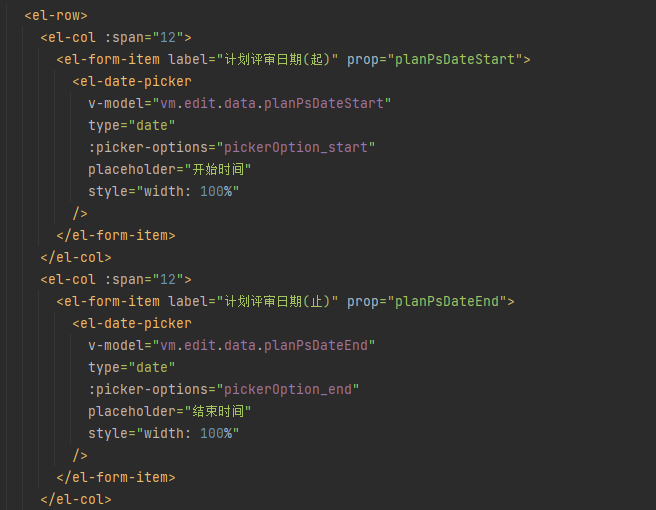
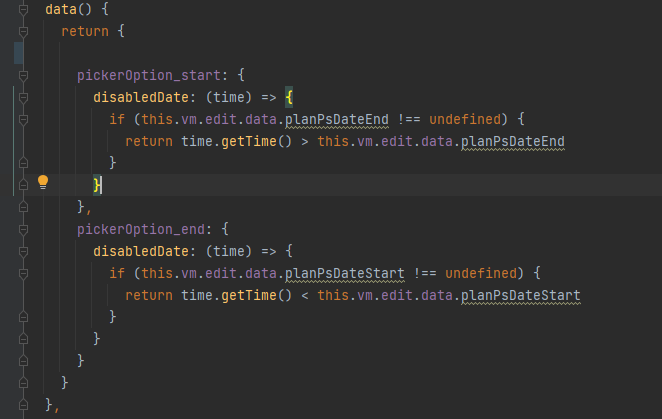
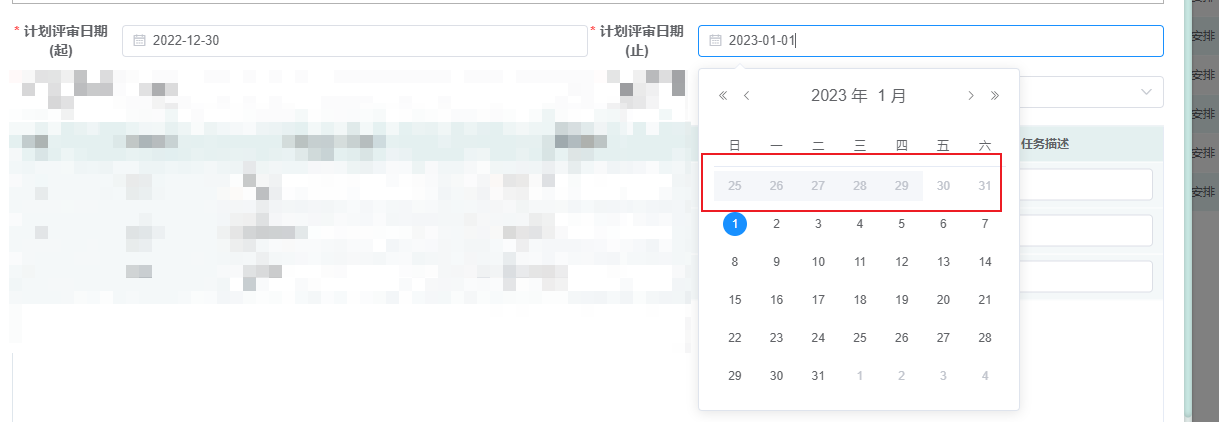
// 这是<template>的 <el-row> <el-col :span="12"> <el-form-item label="计划评审日期(起)" prop="planPsDateStart"> <el-date-picker v-model="vm.edit.data.planPsDateStart" type="date" :picker-options="pickerOption_start" placeholder="开始时间" style="width: 100%" /> </el-form-item> </el-col> <el-col :span="12"> <el-form-item label="计划评审日期(止)" prop="planPsDateEnd"> <el-date-picker v-model="vm.edit.data.planPsDateEnd" type="date" :picker-options="pickerOption_end" placeholder="结束时间" style="width: 100%" /> </el-form-item> </el-col> </el-row> // 这是<script>下的data的 pickerOption_start: { disabledDate: (time) => { if (this.vm.edit.data.planPsDateEnd !== undefined) { return time.getTime() > this.vm.edit.data.planPsDateEnd } } }, pickerOption_end: { disabledDate: (time) => { if (this.vm.edit.data.planPsDateStart !== undefined) { return time.getTime() < this.vm.edit.data.planPsDateStart } } }
2.如果是table一直在循环这种日期,而且只比较每一行的两个日期
效果是这样的
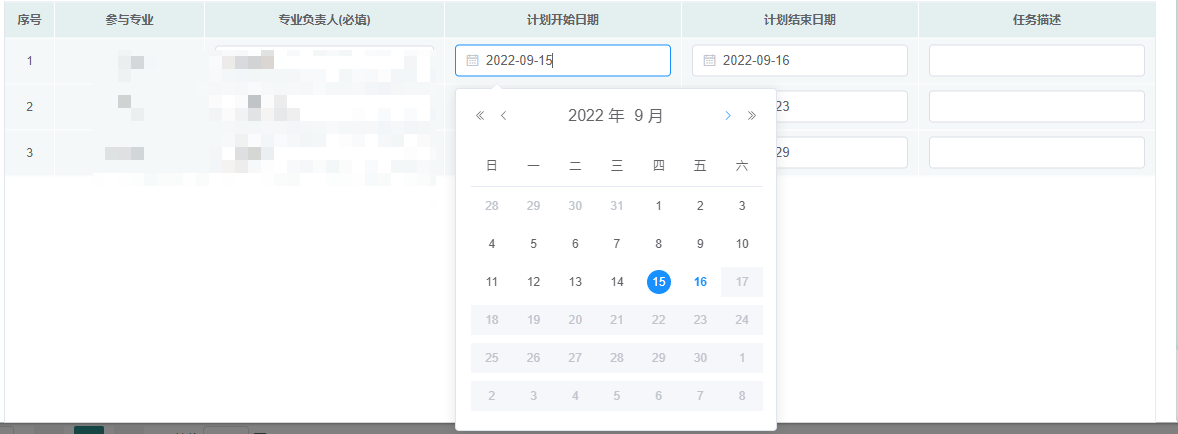
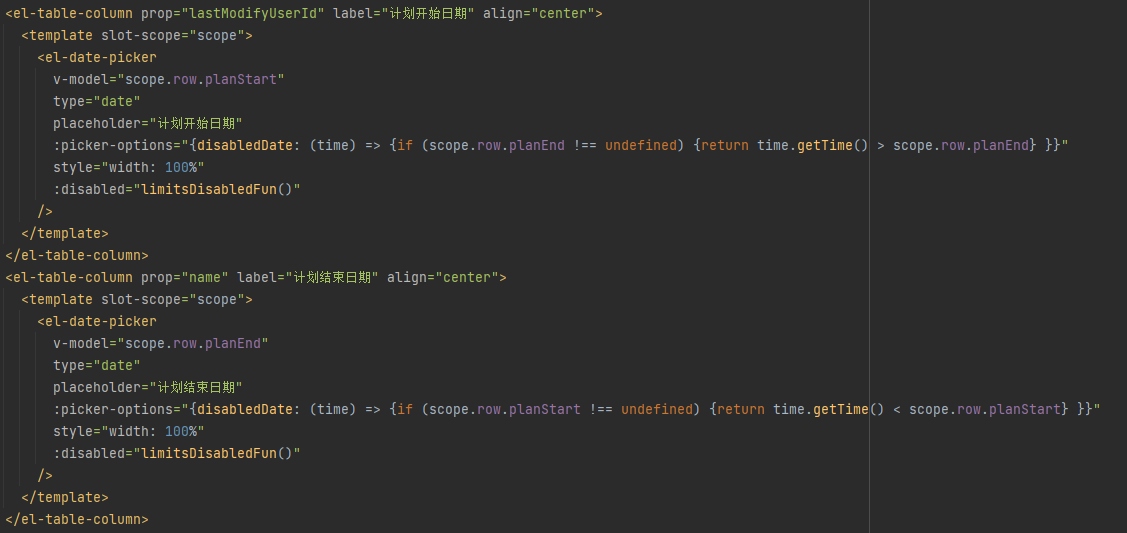
// 放在el-table下的两列<el-table-column prop="lastModifyUserId" label="计划开始日期" align="center"> <template slot-scope="scope"> <el-date-picker v-model="scope.row.planStart" type="date" placeholder="计划开始日期" :picker-options="{disabledDate: (time) => {if (scope.row.planEnd !== undefined) {return time.getTime() > scope.row.planEnd} }}" style="width: 100%" :disabled="limitsDisabledFun()" /> </template> </el-table-column> <el-table-column prop="name" label="计划结束日期" align="center"> <template slot-scope="scope"> <el-date-picker v-model="scope.row.planEnd" type="date" placeholder="计划结束日期" :picker-options="{disabledDate: (time) => {if (scope.row.planStart !== undefined) {return time.getTime() < scope.row.planStart} }}" style="width: 100%" :disabled="limitsDisabledFun()" /> </template> </el-table-column>
原理一样的-就是把data下的pickerOption直接嵌到代码里面,不放在data中
凑字数凑字数凑字数凑字数凑字数凑字数凑字数凑字数凑字数凑字数凑字数凑字数凑字数凑字数凑字数凑字数凑字数凑字数凑字数凑字数凑字数凑字数凑字数凑字数凑字数凑字数凑字数




